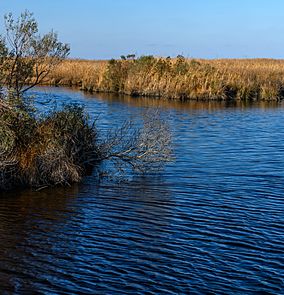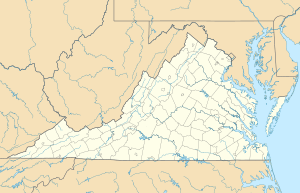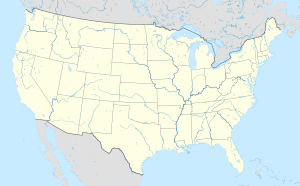Mackay Island National Wildlife Refuge facts for kids
Quick facts for kids Mackay Island National Wildlife Refuge |
|
|---|---|
|
IUCN Category IV (Habitat/Species Management Area)
|
|

Mackay Island Wildlife Refuge
|
|
| Location | Currituck County, North Carolina, Virginia Beach, Virginia, United States |
| Area | 8,231 acres (33.31 km2) |
| Established | 1960 |
| Governing body | U.S. Fish and Wildlife Service |
| Website | Mackay Island National Wildlife Refuge |
The Mackay Island National Wildlife Refuge is a special place created in 1960. Its main job is to protect a safe home for birds that travel long distances, especially the amazing greater snow goose.
This refuge is mostly found on Knotts Island. It sits in the Currituck Sound, a large body of water. Part of the refuge is in Virginia Beach, Virginia, but most of it is in North Carolina. The area is mostly made of marshland, which is a type of wetland. People have known for a long time that this spot is perfect for many different kinds of birds and fish. It's also part of the famous Charles Kuralt Trail.
Contents
Why Mackay Island is Important
The Mackay Island National Wildlife Refuge is in a perfect spot along the Atlantic Flyway. This "flyway" is like a superhighway in the sky for birds. It's a path that millions of birds use when they fly south for winter and north for summer.
Home to Amazing Animals
The refuge is a very important winter home for many types of birds. You can see lots of ducks, geese, and tundra swans here. Sometimes, more than 12,000 snow geese arrive in November! Imagine seeing that many birds all at once.
But it's not just about geese. Many other animals live here too.
- You can find wading birds and shorebirds. These birds have long legs for walking in shallow water.
- There are also raptors, which are birds of prey like hawks and owls.
- Many small birds that migrate from warmer places, called neotropical migrants, also use the refuge.
- Mammals, reptiles, and amphibians also find food, shelter, and places to have their babies here.
- A special sight is a pair of bald eagles. They have built their nest right in the refuge!
Plants of the Refuge
Most of the refuge, about 74 percent, is a type of wetland called a brackish marsh. "Brackish" means the water is a little bit salty, but not as salty as the ocean.
In these marsh areas, you'll see lots of certain plants:
- Cattails, which look like brown hot dogs on a stick.
- Black needlerush, a tall, pointy grass.
- Giant cordgrass, another type of tall grass.
The rest of the refuge has different kinds of habitats. Some areas are farmlands. There are also marsh impoundments, which are areas of water held back by walls. You can also find areas with brush and forests. These forests are a mix of pine trees and hardwood trees.
Common trees in these areas include:
Size of the Refuge
The Mackay Island National Wildlife Refuge covers a huge area. It is about 8,231 acres (33.31 km2) in total. To give you an idea, that's like more than 6,200 football fields!
Most of this land, about 7,357 acres (29.77 km2), is in North Carolina. The smaller part, about 874 acres (3.54 km2), is in Virginia.



